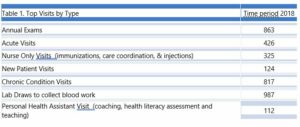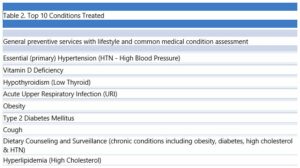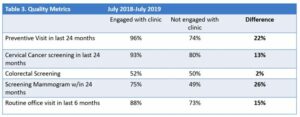The average self-insured company in the U.S. is paying $31–37 per member, per month for primary care — this is about 6-7 percent of the total medical and pharmacy spend. Is this enough? Too little or too much? What are the options if a company wants to increase its investment in primary care? How would the return on the investment be calculated?
These are the questions many companies are asking themselves when they consider adding an onsite or near site clinic — or today, when they consider entering a prepaid advanced (sometimes called direct) primary care relationship. Here are some arguments for considering increasing the primary care investment.
The World Health Organization, in its recent publication Public Spending on Health: A Closer Look at Global Trends, reported that there are huge variations across countries in public spending on primary health care, ranging from 4 percent to 77 percent.
This puts most companies in the U.S. on the very low end of primary care spend internationally. What we see in countries that invest significantly in primary care is more preventive services, lower cost of care, and better results on the quality of care overall to their citizens. But what metrics would need to be followed and what changes in the health benefits would be necessary to make sure the increased investment would work if a company were to go down this path?
Again, going back to assessing worksite clinics, there are three relatively easy to assess:
- Operational — The number of members visiting the clinic, the conditions treated at the clinic, the risk of those going to the clinic, and the services being provided.
- Quality — Preventive services done at the clinic like immunizations, physicals, cancer screening, disease specific preventive services (for example: for diabetes), high quality medication use and adherence to medications, and appropriateness of services for common issues like back pain, migraine headaches, and common infections, such as upper respiratory infections.
- Hard costs — The actual cost of care provided at the clinic, but more importantly, the total cost of care including specialist visits, emergency room visits — both appropriate and avoidable, outpatient imaging and procedures, and inpatient admissions — both for appropriate and avoidable admissions
And one more difficult-to-assess category of metrics — soft costs, which include presenteeism, absenteeism, time away from work, employee satisfaction, and the value of referrals to internal programs provided by the health benefits offered at the corporation (employee assistance plans, transparency, and so forth).
With these metrics in hand, and knowing the costs associated with the clinic, a relatively straightforward calculation of the value of primary care to the company can be calculated. Here are examples of these calculations for one such clinic.
Operationally the clinic sees approximately 60 percent of the employees at the facility, and the services include those listed in Table 1.
For quality metrics, this company already has very high rates of compliance with national standards; however, the difference in the care being received with those going to the clinic as compared to those not going to the clinic can be seen in Table 3.
The Cost of Care analysis can be seen in Table 4. The analysis of the last three years reveals that the difference between those engaged and not engaged by the clinic varied from $4.61 per member, per month to $67.52 per member, per month. The cost of the clinic to the company is $30 per employee, per month; however, the use by spouses and dependents is relatively low due to the location of the clinic and difficulty accessing the clinic (building security).
The soft metrics that are collected include the Net Promotor Score — currently at 98, and the referrals to the other programs are shown in the chart below.
Thus, as can be seen, this clinic is addressing the common conditions affecting the population, focusing on prevention, managing chronic and acute conditions, and performing well above the community providers for common preventive procedures. For two of the last three years, the clinic has also reported a positive hard ROI, and positive soft ROI numbers for those being collected.
Performing this evaluation for all primary care services is more challenging but can be done. With this proactive approach and focus on primary care, companies will be more likely to get out of the reactive, expensive, and inefficient way of managing employee’s health that are leading to higher cost, and lower productivity for most companies today.













